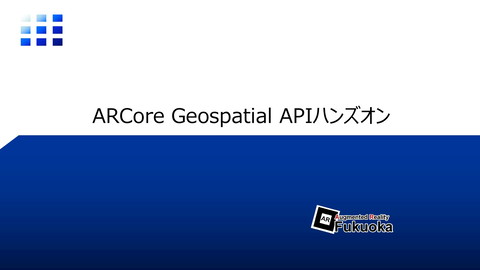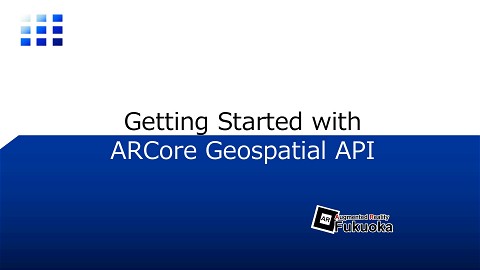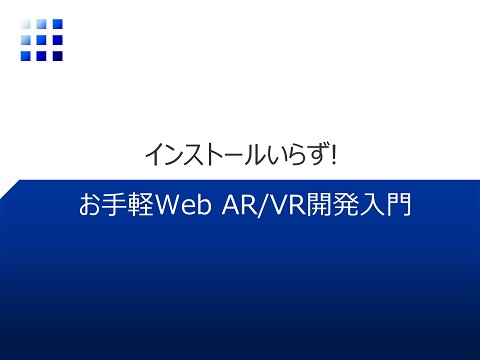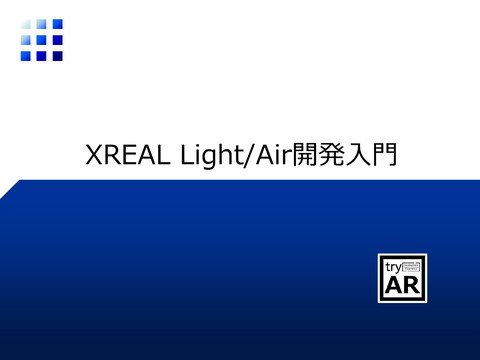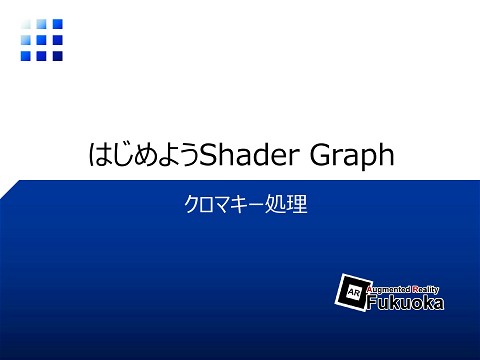Getting Started With WebAR Creation With ZapWorks Designer
1.3K Views
August 08, 23
スライド概要
可視化技術や人間計測/空間計測技術を活用した問題解決に関する研究開発。 ARコンテンツ作成勉強会(tryAR)を主催。
関連スライド
各ページのテキスト
Creating WebAR Without Programming Fundamentals of ZapWorks Designer
Download materials for exercises https://github.com/TakashiYoshinaga/ARFukuoka/raw/main/ZapWorksDesigner202 30802/Samples.zip
Login to ZapWorks (https://zap.works) Log In
Login to ZapWorks (https://zap.works) Log in using the method you chose when creating your account
Create a Project Click
Create a Project Create project
Create a Project Select Designer [Supplemental] Designer: A web browser only Studio: Zappar's original development tool (like Unity) UniversalAR: SDK that can be used with Unity, A-Frame and Babylon.js.
Create a Project QR code [Supplemental] DeepLink (normal URL) can also be issued later. Zapcode is Zappar's proprietary code. You need to use a dedicated application to read it.
Dashboard QR code should be ready.
Open Designer Open Designer
Open Designer Image Tracking [Supplemental] World tracking: Places objects in space without markers. Image tracking: Places objects on top of image markers. Face tracking: Tracks a face using an in-camera camera and overlays an object on it.
(Aside) Many samples are also provided You can choose a sample from Templates
Open Designer Start creating
Open Designer List of object types that can be displayed in AR Details of this project or selected object
Configuring Tracking Image Upload target image
Select a Type of Tracking Image Select Flat for this tutorial Next
Uploading Tracking Image Brows
Uploading Tracking Image marker.jpg Open
Uploading Tracking Image Tracking Image will be displayed after successful upload. [Tip] PNG or JPEG can be used for the tracking image, but be aware that PNG may not function properly as a marker if there is transparency information. (JPEG is recommended!).
Setting of Tracking Image Enter the actual size of the Tracking Image (height size by default)
Configuring Tracking Image Confirm
Configuring Tracking Image・・・ Progress
Configuring Tracking Image If the marker appears, it's OK.
(余談) Curvedマーカー 曲⾯マーカーも選べる
(Aside) Curved markers Flat size of Image applied to curved surfaces Radius or Circumference of cylinder
Explanation of Tracking Image Project Click here to change the Tracking Image Upright: Vertical surface such as a wall Flat: Horizontal surface such as a desk
Display a 3D Model Place the object to be displayed on top of the Tracking Image
Upload a 3D Model Click 3D
Upload a 3D Model Sample object is displayed (not used this time)
Upload a 3D Model Click Upload Button
Upload a 3D Model ①Samples Folder ②flower.glb ③Open
Upload a 3D Model Uploaded 3D model should be shown
Place 3D Model Drag & Drop onto tracking image
Place 3D Model 3D model is shown
Place 3D Model Click [3D] to hide 3D model pane
Changing the Editor's Perspective Rotation: Drag area other than the object Scaling: Mouse scrolling
Adjustment of Object Position, Size, and Angle Click a 3D object
Adjustment of Object Position, Size, and Angle Click Drag each axis
Adjustment of Object Position, Size, and Angle Click Drag axis to change scale
Adjustment of Object Position, Size, and Angle Click Drag each ring to rotate
Adjustment of Object Position, Size, and Angle Open Transforms to specify position, size, and angle numerically.
Preview on Smartphone Preview
Preview on Smartphone Read the QR displayed in your environment with your smartphone [Supplement] This QR Code link will be disabled after a certain time
Preview on Smartphone
Adding Particles Applets
Adding Particles Particle
Adding Particles Select a Particle (ex.Rain) Add to scene
Adding Particles Click Applets again to hide the applet list
Adding Particles Particle will be shown
Adjustment of Particle Modify the viewpoint to show the source of particles
Adjustment of Particle Click the source of particle Open Particles
Adjustment of Particle [Material] Picture of particles [Color] Color of particles [Intensity] Number of particles generated [Particle Size] Size of each particle And so on... There are many things to try.
Preview on Smartphone
(Aside) Avatar There is also a function to make yourself an avatar and display it in AR.
(Aside) Avatar https://youtu.be/HFzoU6UqNrU
(Aside) Avatar For more information, visit the archive of past events! https://www.youtube.com/watch?v=1acFpzbK3io
Publishing a Project Publish
Publishing a Project Back to dashboard
Publishing a Project Share AR by usint this QR DL from here
Publishing a Project How to share without using QR?
URL New trigger
URL Deep link Create
URL Link will be generated
URL Click
URL This URL can be used share your AR
Setting a Name of AR Project Back to project overview
Setting a Name of AR Project Click on the button next to Untitled project * The button appears when you hover the cursor over it.
Setting a Name of AR Project Edit the name and press enter key
Check the List of Projects Click
Check the List of Projects The project created this time is displayed.
Check the List of Projects Number of remaining contents you can create for free (up to 5 free contents in total)
Check the List of Projects Click here to create new content.
Check the List of Projects Click here to delete a Project Delete
That's all for now
